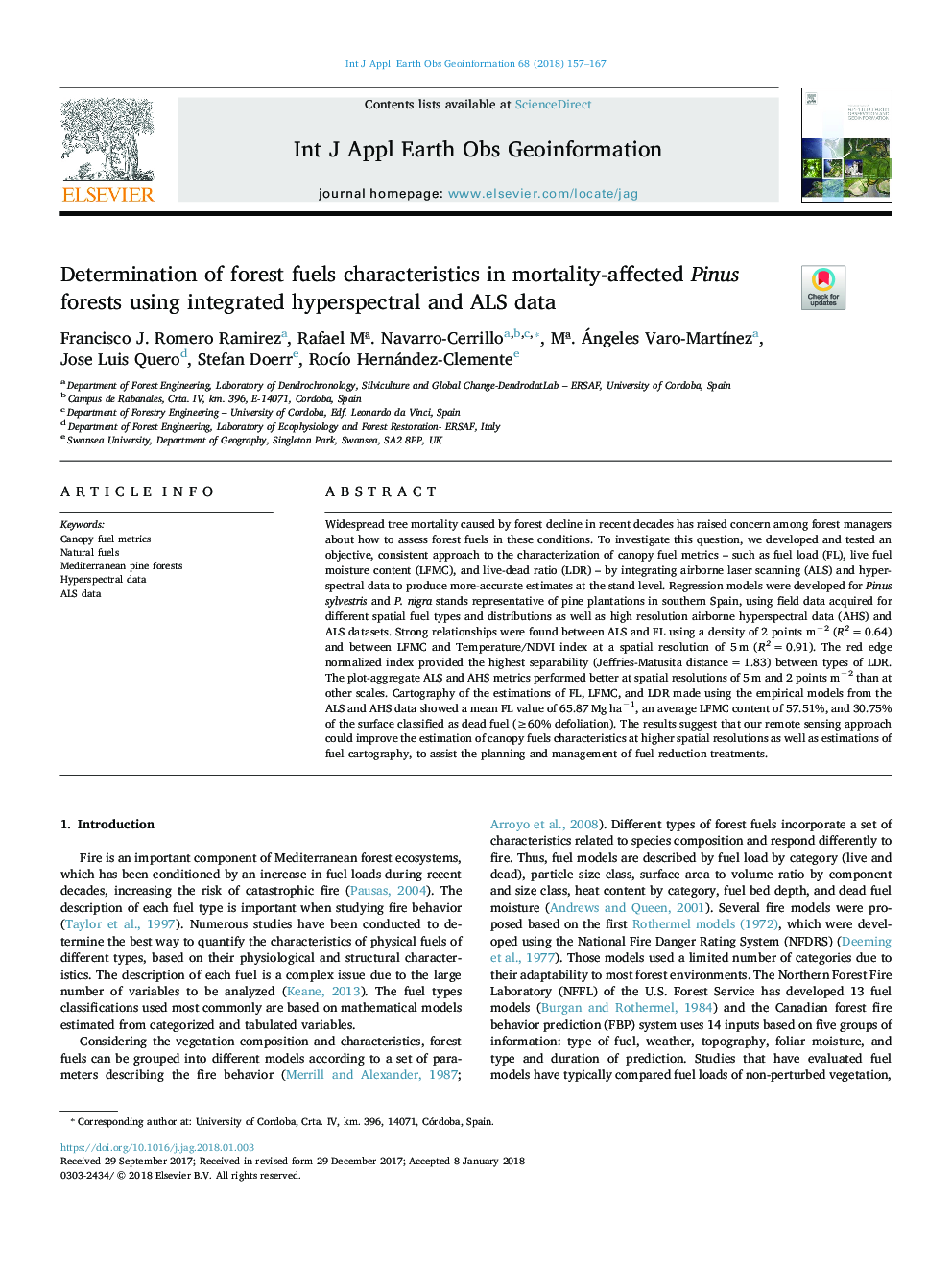| Article ID | Journal | Published Year | Pages | File Type |
|---|---|---|---|---|
| 8867945 | International Journal of Applied Earth Observation and Geoinformation | 2018 | 11 Pages |
Abstract
Widespread tree mortality caused by forest decline in recent decades has raised concern among forest managers about how to assess forest fuels in these conditions. To investigate this question, we developed and tested an objective, consistent approach to the characterization of canopy fuel metrics - such as fuel load (FL), live fuel moisture content (LFMC), and live-dead ratio (LDR) - by integrating airborne laser scanning (ALS) and hyperspectral data to produce more-accurate estimates at the stand level. Regression models were developed for Pinus sylvestris and P. nigra stands representative of pine plantations in southern Spain, using field data acquired for different spatial fuel types and distributions as well as high resolution airborne hyperspectral data (AHS) and ALS datasets. Strong relationships were found between ALS and FL using a density of 2 points mâ2 (R2â¯=â¯0.64) and between LFMC and Temperature/NDVI index at a spatial resolution of 5â¯m (R2â¯=â¯0.91). The red edge normalized index provided the highest separability (Jeffries-Matusita distanceâ¯=â¯1.83) between types of LDR. The plot-aggregate ALS and AHS metrics performed better at spatial resolutions of 5â¯m and 2 points mâ2 than at other scales. Cartography of the estimations of FL, LFMC, and LDR made using the empirical models from the ALS and AHS data showed a mean FL value of 65.87â¯Mgâ¯haâ1, an average LFMC content of 57.51%, and 30.75% of the surface classified as dead fuel (â¥60% defoliation). The results suggest that our remote sensing approach could improve the estimation of canopy fuels characteristics at higher spatial resolutions as well as estimations of fuel cartography, to assist the planning and management of fuel reduction treatments.
Related Topics
Physical Sciences and Engineering
Earth and Planetary Sciences
Computers in Earth Sciences
Authors
Francisco J. Romero Ramirez, Rafael Mª. Navarro-Cerrillo, Mª. Ángeles Varo-MartÃnez, Jose Luis Quero, Stefan Doerr, RocÃo Hernández-Clemente,
